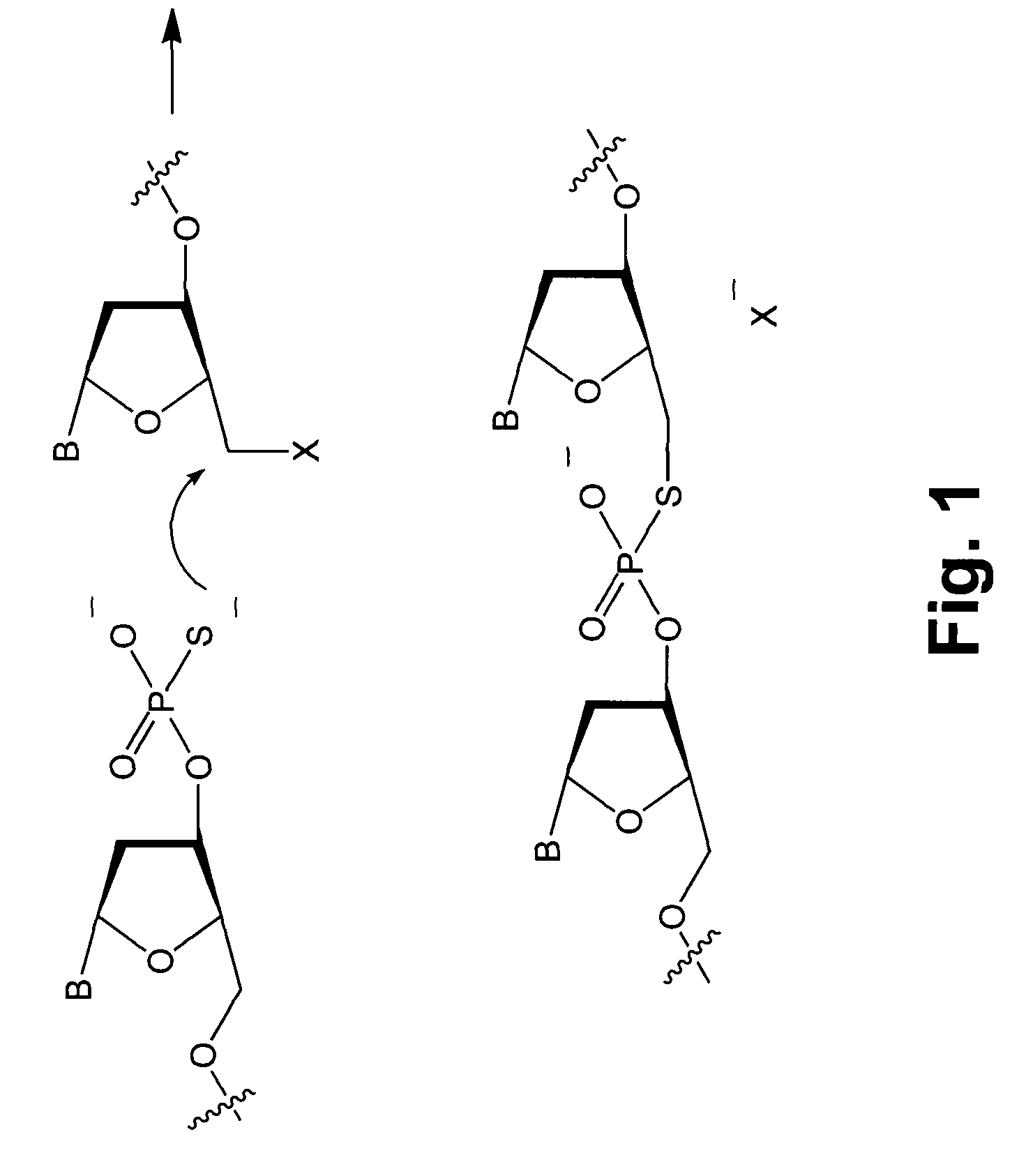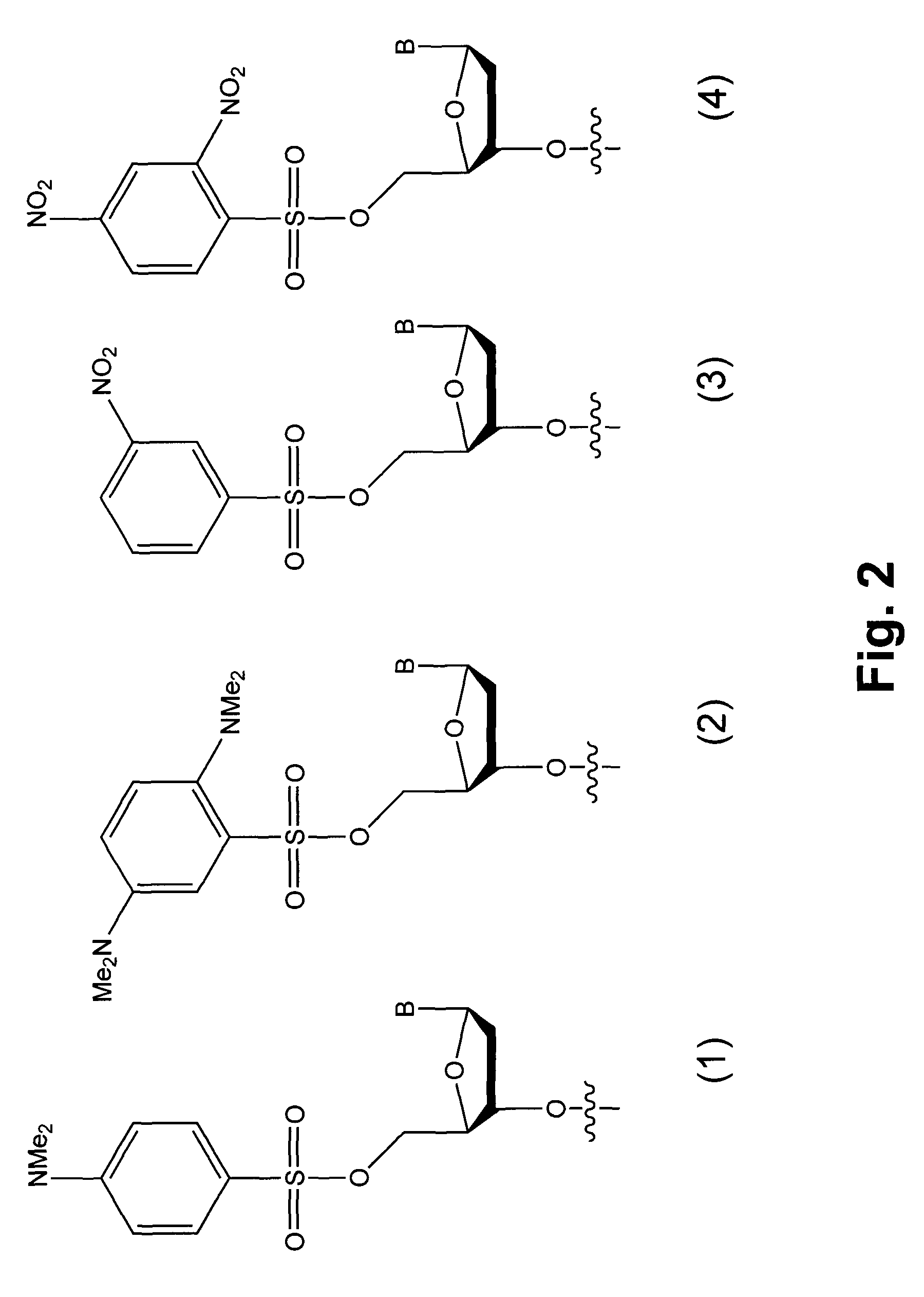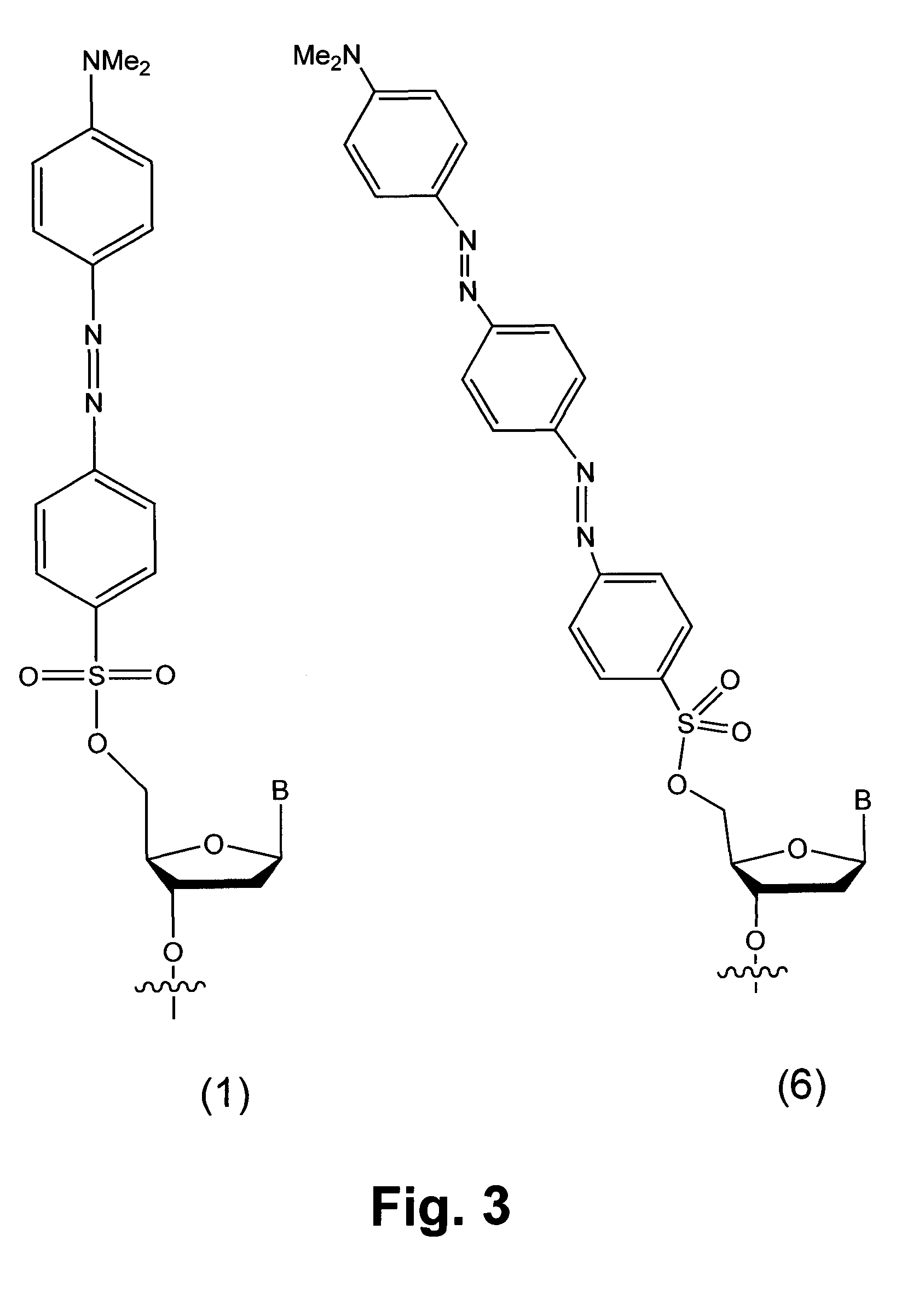Detection of chemical ligation using fluorescence quenching leaving groups
a technology of quenching and chemical ligation, which is applied in the field of detection of chemical ligation, can solve the problems of false positives, dangerously long bacterial culture period, and non-specific binding of target nucleic acids to oligonucleotide probes to target dna,
- Summary
- Abstract
- Description
- Claims
- Application Information
AI Technical Summary
Benefits of technology
Problems solved by technology
Method used
Image
Examples
example 1
Reaction in Solution
[0054]Wild type and mutant sequences 50 nucleotides in length were chosen from the H-ras gene. A known C to A transversion in codon 12 was selected to fall at the center of a 7mer binding site. The nucleophilic 7mer sequence was 5′-CCGTCGG-3′ (SEQ ID NO:4), where the central T hybridizes to the A transversion, but not to the wild type C. The nucleophilic sequence contained a 3′ phosphorothioate group. The electrophilic 13mer sequence was 5′-TGT*GGGCAAGAG-3′ (SEQ ID NO: 1). A dabsyl group was used on the 5′ hydroxyl as a leaving group of the electrophilic sequence, and a commercially available fluorescein C-5-alkenyl conjugate of dU (marked as T*) was used to place the fluorophore two nucleotides away from the quencher. The wild type target sequence was 3′-ATATTCGACCACCACCACCCGCGGCCGCCACACCCGTTC TCACGCGACTG-5′ (SEQ ID NO:2), and the mutant transversion target sequence was 3′-ATATTCGACCACCACCACCCGCGGCAGCCACACCCGTTC TCACGCGACTG-5′ (SEQ ID NO:3; where the C to A tran...
example 2
Reaction on a Solid Support
[0057]As many genetic analysis methods use probes affixed to beads, slides, and other surfaces, a solid support was used to evaluate the instant invention. A 7mer MUT probe (5′-CCGTCGG-3′; SEQ ID NO:4) on 90 μm beads (1000A pore size) using commercially available reverse (5′→3′) phosphoramidites was used, placing a 3′ phosphorothioate moiety on the final 3′ hydroxyl group. A hexaethylene glycol linker was used to alleviate potential crowding problems near the polymer surface. Such beads then have the potential to autoligate a 13mer quenched electrophile probe to themselves, in the presence of the correct target DNA. This was expected to result in the beads becoming fluorescent, as the dabsylate group was lost and the nearby fluorescein label lost quenching. The solid-phase autoligations were monitored by imaging under a fluorescence microscope. Results showed that the reaction proceeded on the polystyrene beads much as it does in solution. At the start of ...
example 3
Use of TAMRA as a Fluorophore
[0058]Example 1 was repeated using a different fluorophore. The use of different fluorophores would make it possible to sense multiple genetic sequences simultaneously. Dabsyl has been reported as a quencher for varied fluorophores. The same ligations on beads were carried out using a dabsyl / TAMRA electrophilic probe. The results showed that ligation and unquenching was also successful for the new dye.
PUM
| Property | Measurement | Unit |
|---|---|---|
| melting temperature | aaaaa | aaaaa |
| temperature | aaaaa | aaaaa |
| pore size | aaaaa | aaaaa |
Abstract
Description
Claims
Application Information
 Login to View More
Login to View More - R&D
- Intellectual Property
- Life Sciences
- Materials
- Tech Scout
- Unparalleled Data Quality
- Higher Quality Content
- 60% Fewer Hallucinations
Browse by: Latest US Patents, China's latest patents, Technical Efficacy Thesaurus, Application Domain, Technology Topic, Popular Technical Reports.
© 2025 PatSnap. All rights reserved.Legal|Privacy policy|Modern Slavery Act Transparency Statement|Sitemap|About US| Contact US: help@patsnap.com



